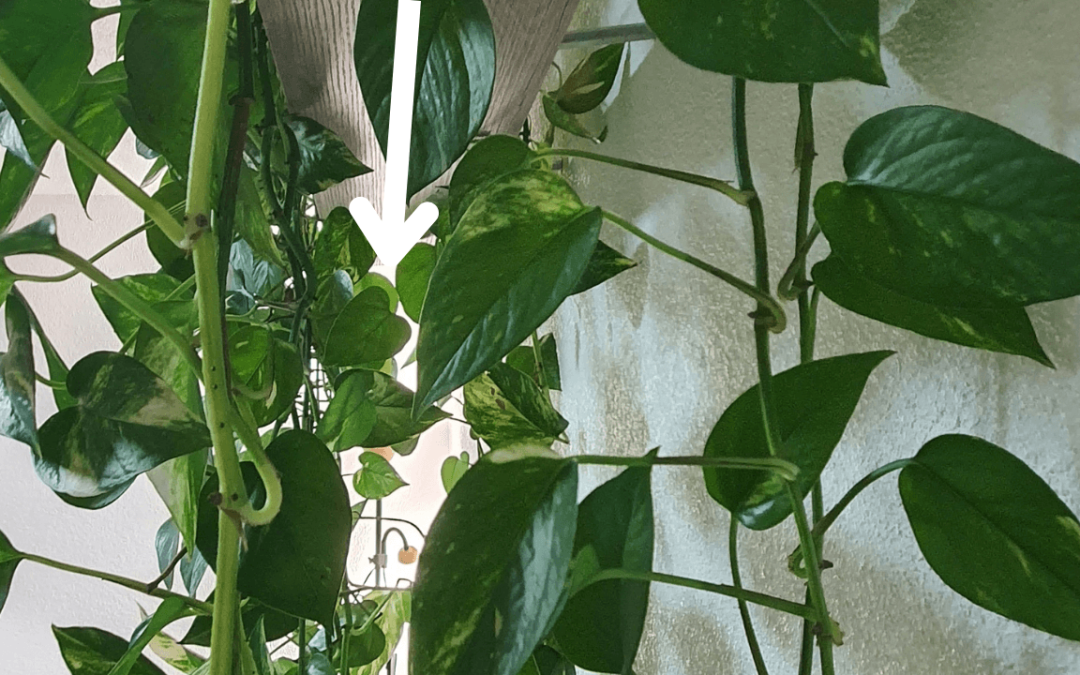Devil’s Ivy, scientifically known as Epipremnum aureum and commonly referred to as Pothos, is a well-known and beloved indoor plant. It has gained popularity due to its low maintenance requirements, adaptability to different lighting conditions, and air-purifying qualities. This fast-growing vine plant displays heart-shaped leaves in vibrant green color with variegation in shades of yellow or white. Devil’s Ivy is a versatile plant that can be grown in hanging baskets or trained to climb on a trellis or support structure.
Importance of Proper Care
As an horticulturalist, it’s crucial to emphasize the importance of proper care when it comes to Devil’s Ivy. The plant’s health and growth are directly dependent on its care, and any neglect can lead to a decline in its appearance, decreased air-purifying ability, and ultimately its death.
To ensure that your Devil’s Ivy thrives, it’s essential to understand its basic needs. This includes providing adequate lighting, watering the plant appropriately, using appropriate soil, maintaining proper humidity levels, and providing regular fertilization. By providing the right conditions, you can ensure that your Devil’s Ivy remains healthy and vibrant for years to come.
Lighting
Devil’s Ivy prefers bright, indirect light. It can tolerate low light conditions, but it will not thrive or grow as well in those conditions. Placing the plant near a window with filtered light or under fluorescent lights is ideal. Avoid direct sunlight, as this can scorch the leaves.
How to Determine if Your Plant is Getting Enough Light
It’s important to understand how to determine if your Devil’s Ivy plant is receiving adequate light. Yellowing leaves or a loss of variegation can be signs of insufficient light. Additionally, long and leggy stems indicate that the plant is reaching for more light. It’s important to note that too much direct sunlight can also be harmful to Devil’s Ivy, so finding the right balance of light is key to keeping your plant healthy and thriving.
How to Adjust Lighting if Necessary
Proper lighting is crucial for the health of Devil’s Ivy. If you notice that the leaves are turning yellow or losing their variegation, it may be a sign that the plant is not getting enough light. Alternatively, if the stems are long and leggy, it can indicate that the plant is stretching towards the light source.
To address this issue, you should consider moving your plant to a brighter location with indirect light. If you can’t provide such a location, using artificial lighting, such as fluorescent lights, can supplement the plant’s needs. If the plant is getting too much light, you can move it to a location with more shade or filter the light using a sheer curtain. By ensuring that your plant gets the right amount of light, you can help it thrive and maintain its appearance.
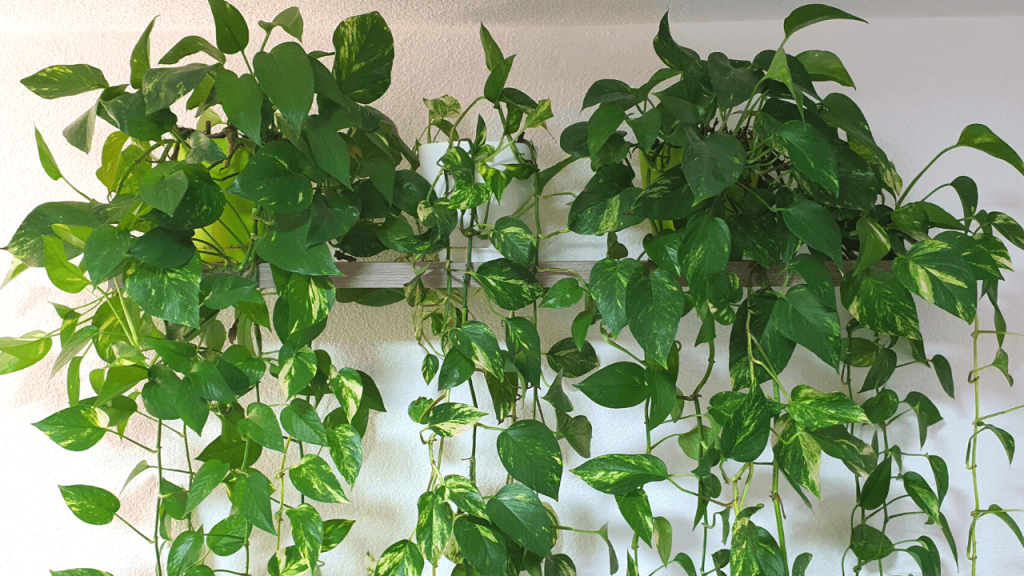
Watering
Devil’s Ivy prefers to have evenly moist soil, but it is important not to over-water. A good rule of thumb is to water the plant once a week or when the top inch of soil feels dry to the touch. Or if you don’t want to get your hands dirty you can use humidity detector like the one on the picture below. You can get these on amazon very cheaply.
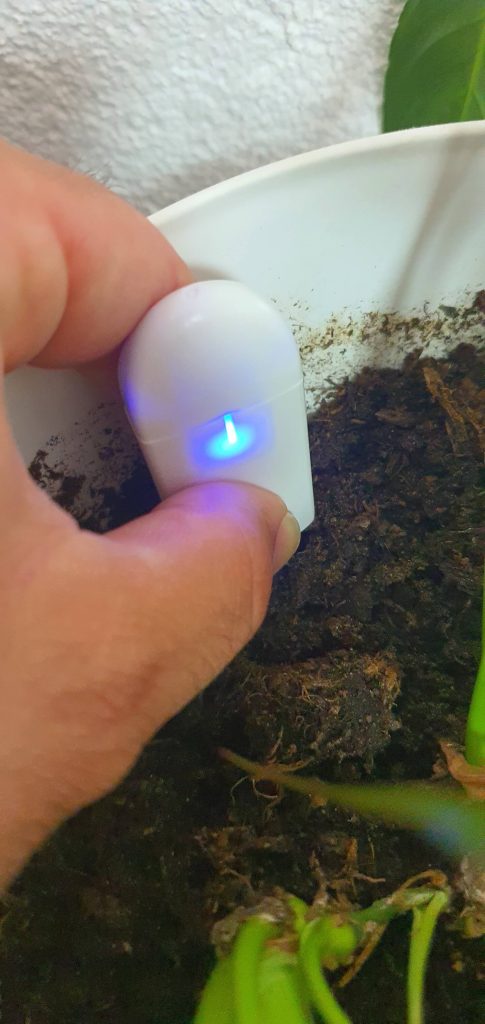
How to Determine if Your Plant Needs Water
You can determine if your Devil’s Ivy needs water by assessing the moisture level of the soil. Insert your finger or a moisture meter into the soil, about an inch deep. If the soil feels dry to the touch, it’s time to water the plant. If the soil feels damp, wait a few more days before watering to avoid overwatering. You can also check the weight of the pot by lifting it. If it feels significantly lighter than when it was last watered, it may be time to water the plant. However, it’s important to note that environmental factors such as temperature, humidity, and light intensity can also affect the watering needs of the plant, so it’s essential to consider these factors when determining the watering frequency.
Signs of Over-Watering or Under-Watering
It’s important to understand the signs of over-watering and under-watering for Devil’s Ivy plants. Over-watering can cause yellowing leaves, root rot, and soil that feels mushy or overly wet. Under-watering can lead to wilted leaves and dry, crunchy soil. By monitoring your plant’s soil moisture and adjusting your watering schedule accordingly, you can ensure that your Devil’s Ivy stays healthy and hydrated.
Soil
Devil’s Ivy prefers well-draining, slightly acidic soil with a pH between 6.0 and 6.5. A quality potting mix with added perlite or sand to improve drainage is ideal.
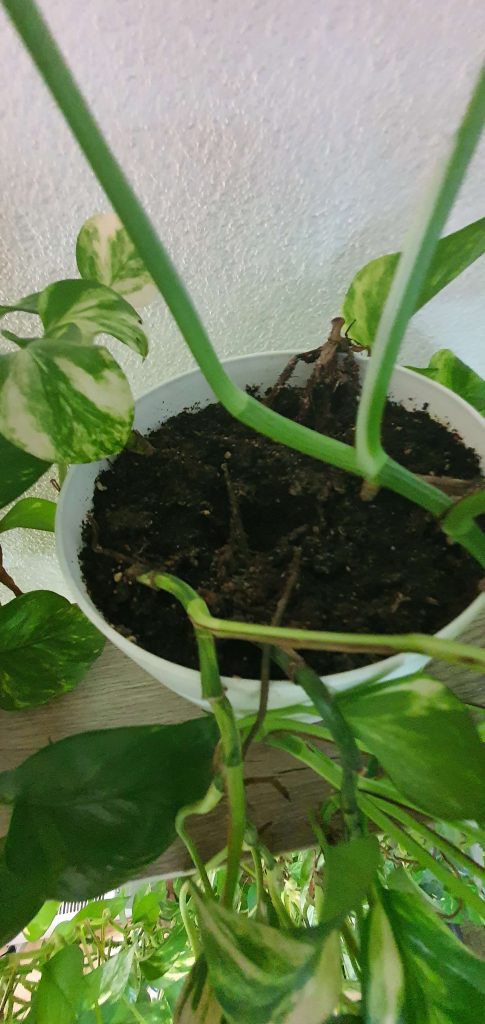
Potting Soil Options
Suitable potting soil is essential to ensure that Devil’s Ivy thrives. A general-purpose potting mix or a soil mix formulated for houseplants is an excellent choice for potting Devil’s Ivy. These soils are lightweight, well-draining, and contain the necessary nutrients to promote healthy growth. However, avoid using heavy or clay soils as they can retain too much moisture, causing the plant’s roots to rot. Additionally, a soil mix that contains perlite or vermiculite can help improve drainage and aeration, which are crucial for Devil’s Ivy to grow well.
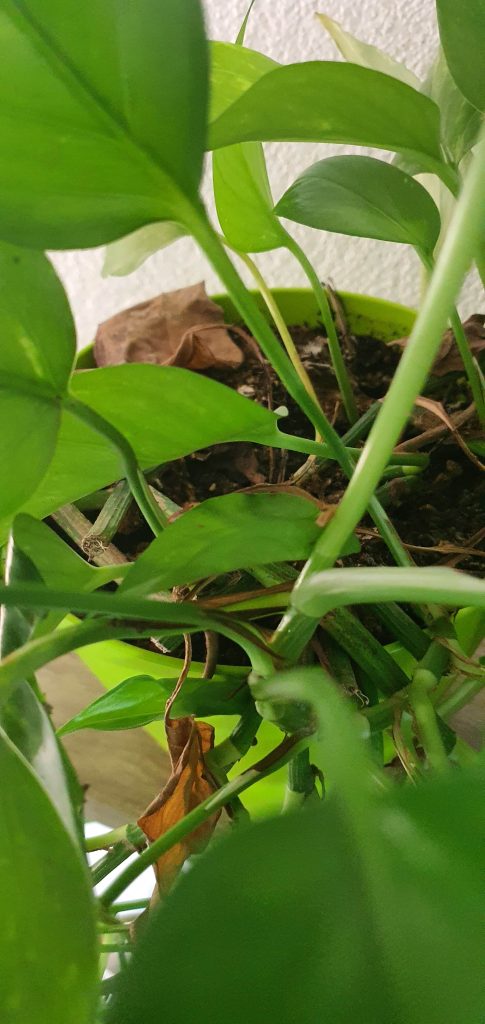
Repotting Guidelines
I recommend repotting Devil’s Ivy every 2-3 years or when the roots become root-bound. Repotting gives the plant more space to grow and replenishes the soil’s nutrients. When repotting, choose a pot that is slightly larger than the previous pot, but not too large as it can retain too much moisture. Drainage holes are essential to prevent water from accumulating in the pot and causing root rot. When repotting, gently remove the plant from its pot, loosen any tangled roots, and add fresh potting soil to the new pot. Make sure to water the plant thoroughly after repotting to help it adjust to its new environment.
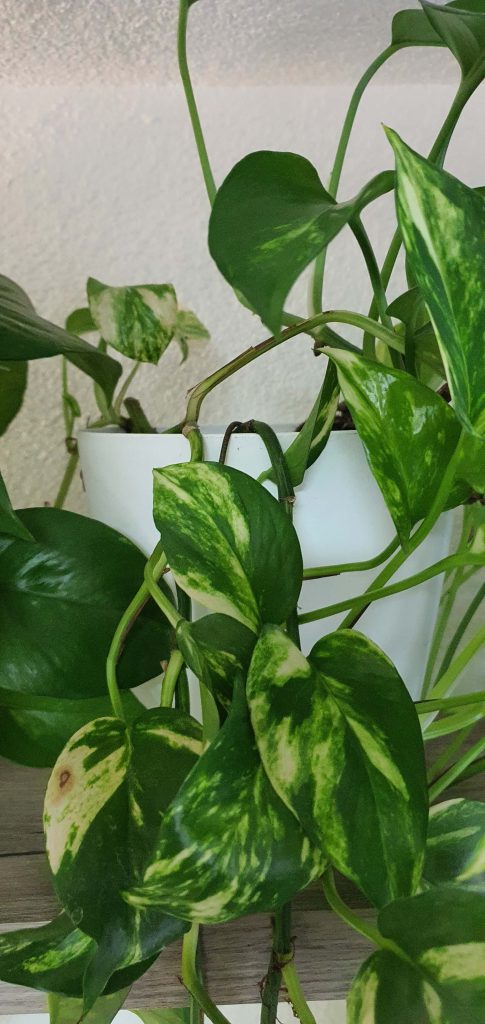
Humidity
Devil’s Ivy prefers a relative humidity between 40-70%.
How to Maintain Humidity Levels
I suggest several ways to maintain proper humidity levels for Devil’s Ivy. One of the most effective methods is to place a tray filled with water near the plant, as the evaporation increases the humidity in the surrounding air. You can also mist the plant’s leaves regularly with water to provide additional moisture, or use a humidifier to regulate the humidity levels in the room. Keep in mind that Devil’s Ivy prefers moderate to high humidity levels, so be sure to monitor the humidity levels and adjust as needed.
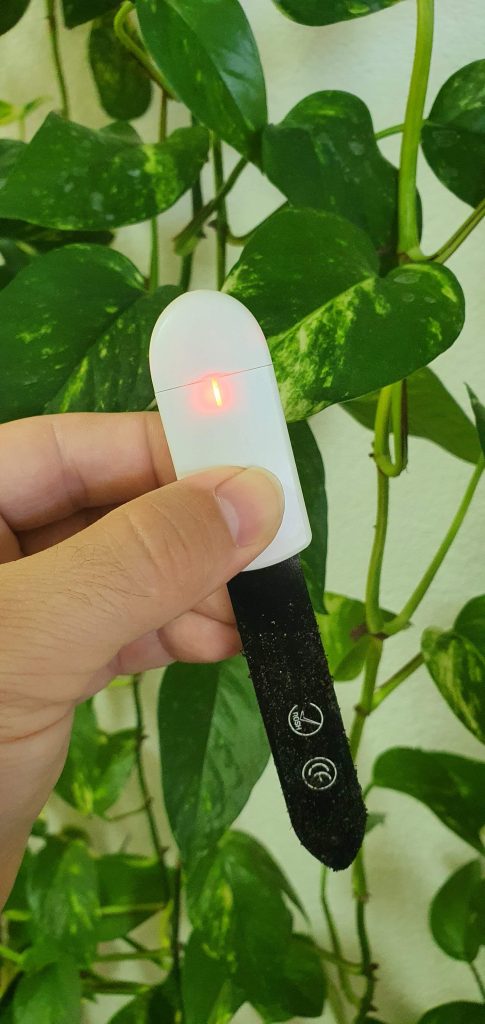
Signs of Low Humidity
Low humidity can cause various problems to Devil’s Ivy, such as brown tips, leaf drop, and dry, crispy leaves. These symptoms are an indication that the plant is not receiving enough moisture from the air. It’s important to monitor these signs and take action to increase the humidity levels around the plant.
Tips for Maintaining Humidity in Dry Climates
In arid or dry climates, it can be a challenge to maintain proper humidity levels for Devil’s Ivy. One effective way to increase humidity is by grouping several plants together, which can create a microclimate with higher humidity levels. You can also place a tray of water near the plants or use a humidifier to add moisture to the air. Another option is to use a pebble tray, which involves placing a layer of pebbles in a shallow tray and filling it with water, then placing the potted plant on top of the pebbles. As the water evaporates, it creates humidity around the plant. Regularly misting the leaves with water can also help maintain humidity, but be careful not to overdo it as this can increase the risk of fungal growth.
Fertilizing
I can say that fertilizing your Devil’s Ivy is crucial to ensure its health and growth. It is necessary to provide the plant with the essential nutrients that are required for optimal growth. Regular fertilization can also help to maintain the plant’s leaf color, making them more vibrant and green, and promote foliage growth.
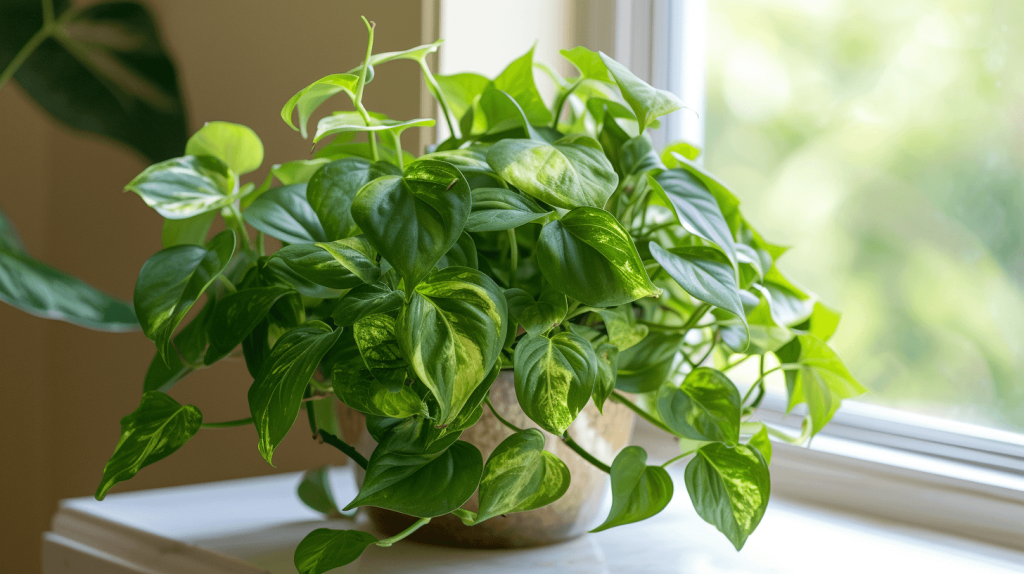
When to Fertilize
I would say that it’s important to fertilize your Devil’s Ivy regularly to promote growth and maintain its health. During the growing season, which is in the spring and summer, you should fertilize the plant every 4-6 weeks. During the dormant season, which is in the fall and winter, you should fertilize the plant once a month to keep it healthy.
What Type of Fertilizer to Use
Using a balanced, water-soluble fertilizer specifically designed for houseplants is the ideal choice for Devil’s Ivy. It’s important to follow the instructions on the fertilizer package for the appropriate amount to use, and avoid over-fertilizing, which can harm the plant. Remember to fertilize every 4-6 weeks during the growing season (spring and summer), and monthly during the dormant season (fall and winter).
Signs of Over-Fertilizing
Over-fertilizing Devil’s Ivy can lead to several issues such as brown tips on the leaves, yellowing leaves, and stunted growth. If you notice any of these signs, it is essential to reduce the amount of fertilizer you are using or stop fertilizing the plant altogether until it has fully recovered. Keep in mind that the frequency and amount of fertilization should always be based on the specific needs of the plant and the instructions on the fertilizer package.
Pruning and Training
I would like to emphasize the importance of pruning for Devil’s Ivy. Pruning is not only essential for maintaining its shape but also encourages new growth and helps to remove any yellow or damaged leaves. It is recommended to prune Devil’s Ivy regularly to prevent it from becoming too leggy or overgrown. When pruning, use clean and sharp pruning shears to make clean cuts and avoid tearing the plant’s tissue. Also, it is best to prune during the plant’s active growth season, which is typically in spring or early summer.
When to Prune
It is recommended to prune Devil’s Ivy as needed throughout the year, but the best time to do it is in the spring or early summer when new growth is starting to emerge. Pruning at this time will allow the plant to recover and encourage new growth.
How to Prune
When pruning Devil’s Ivy, it’s important to use sanitized, sharp pruning shears to avoid damaging the plant. Cut back the stems to a healthy node, which is where a leaf meets the stem, and make sure to leave a small portion of the stem above the node. This will encourage new growth to emerge from that point and maintain the plant’s shape. Be mindful of the plant’s growth habit and prune accordingly, removing any yellow or damaged leaves to keep the plant healthy.
Training
Devil’s Ivy is a versatile plant that can be trained to grow up a trellis or stake, or to cascade down the side of a hanging planter. To train the plant, gently tie the stems to the support as they grow, using soft ties like twine or plant tape, being careful not to damage the plant. This will help the plant to grow in the desired direction and create an attractive display. It is also important to periodically check the ties and adjust them as needed to prevent them from becoming too tight and damaging the stems.
Pests and Diseases
It’s important to be aware of common pests that can affect Devil’s Ivy, such as spider mites, mealybugs, and scale insects. These pests can cause yellowing of the leaves, leaf drop, and other damage to the plant. Prevention is key, so it’s important to regularly inspect the plant for signs of infestation and address any issues promptly. If an infestation does occur, there are various control methods available, such as spraying the plant with insecticidal soap or using natural predators like ladybugs to help control the pests.
Prevention
I recommend preventing pest infestations in Devil’s Ivy by maintaining the plant’s health and removing any dead or yellowing leaves promptly. This can reduce the plant’s attractiveness to pests and help to keep it healthy. Regularly inspect the plant for signs of pests, such as yellowing leaves or sticky residue on the foliage, and take action immediately if any are detected. In addition, avoid overwatering the plant and ensure that it receives adequate sunlight and proper air circulation, as these factors can also contribute to pest problems.
Treatment
If you find pests such as spider mites, mealybugs, or scale insects on your Devil’s Ivy, you can treat the plant with a pesticide specifically formulated for houseplants. It is important to choose a pesticide that targets the specific pest and to follow the instructions on the package for the appropriate amount to use. Make sure to treat the entire plant, including the undersides of the leaves. However, it’s best to use pesticides as a last resort and try other methods such as insecticidal soap or neem oil before resorting to chemicals.
Common Diseases
Note that Devil’s Ivy is susceptible to various diseases, such as root rot and fungal leaf spot. These ailments are commonly attributed to overwatering, inadequate drainage, or high humidity. Proper maintenance practices such as adequate watering, soil drainage, and optimal humidity levels can help prevent these diseases from attacking the plant.
Prevention and Treatment
I would suggest that prevention is the best approach when it comes to root rot and fungal leaf spot in Devil’s Ivy. To avoid these diseases, it’s essential to ensure the plant is planted in well-draining soil and watered appropriately. Overwatering and poor drainage can create a breeding ground for fungal spores, leading to disease development.
If you do notice any symptoms of disease, such as discolored or spotted leaves, it is crucial to remove any affected leaves immediately to prevent further spread of the disease. You can also treat the plant with a fungicide formulated for houseplants to help control the disease. Make sure to follow the instructions on the fungicide package for the appropriate amount to use and apply it to the entire plant, including the undersides of the leaves.
Conclusion
Taking care of Devil’s Ivy requires providing it with bright, indirect light and keeping the soil consistently moist, but not waterlogged. It is also crucial to maintain a moderate temperature and humidity level. Regular fertilization with a balanced, water-soluble fertilizer, specifically formulated for houseplants, and pruning can also promote healthy growth. When pruning, use clean, sharp scissors or pruning shears to cut back the stems to a healthy node. Furthermore, it is essential to prevent pest infestations by maintaining a healthy plant, removing dead or yellowing leaves, and treating the plant with a pesticide specifically formulated for houseplants if necessary. In addition, root rot and fungal leaf spot can be prevented by planting the Devil’s Ivy in well-draining soil and avoiding overwatering.

Final Thoughts
I can confirm that Devil’s Ivy is indeed a hardy and low-maintenance plant that can add greenery to any indoor space but also improve the air quality. By providing it with proper care, you can ensure that it thrives for years to come. It is an ideal plant for beginners due to its adaptability to a variety of conditions. Follow the care tips provided in this article, and you can enjoy the beauty of Devil’s Ivy in your home without much effort.

